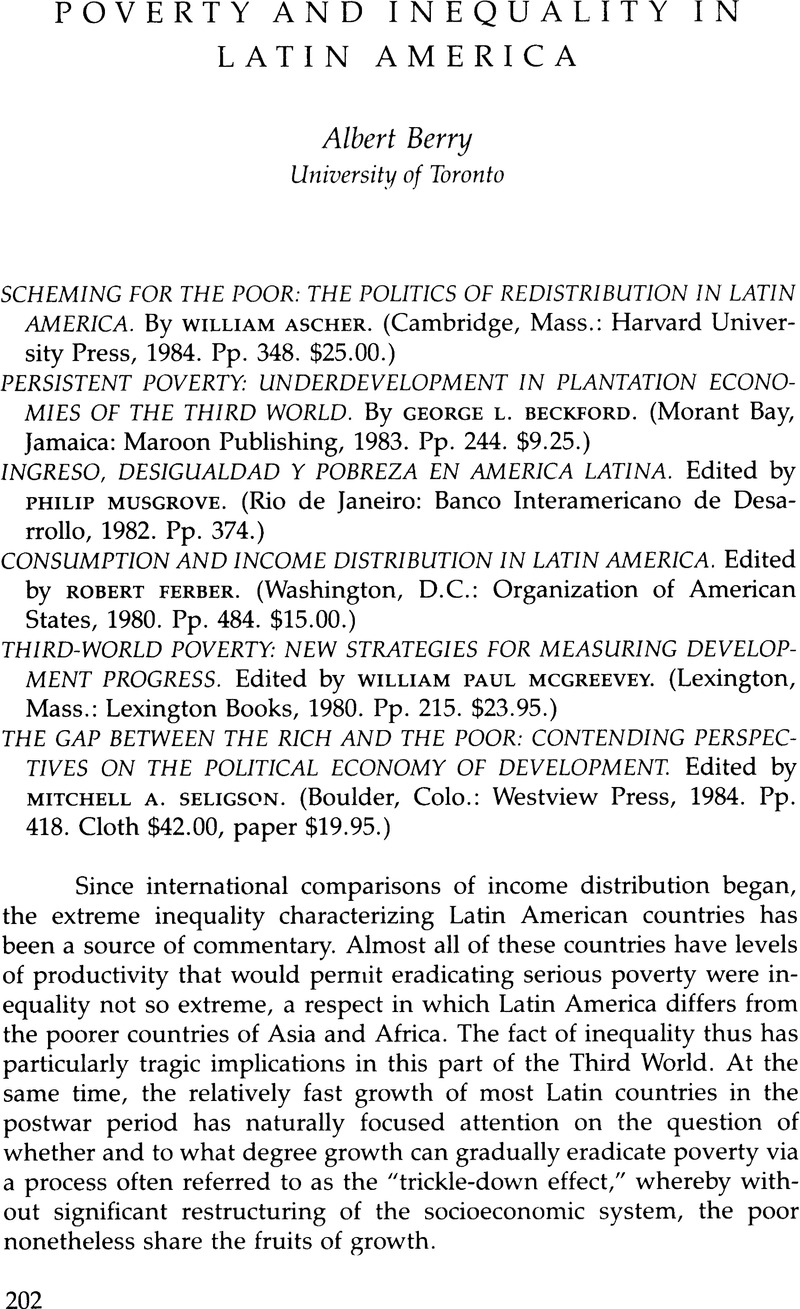Published online by Cambridge University Press: 12 October 2022

1. A methodological lag suffered by all the empirical studies of the determinants of income distribution in Seligson's collection is the failure to move to simultaneous equations models, now fairly standard in economics. Such models offer advantages when the mechanisms under discussion involve sequences of effects rather than a set of determinants that all impact directly on the dependent variable. Thus when it is well known that such variables as land distribution, distribution of education, and a few others are direct or proximate determinants of inequality, but that other more systemic variables (such as those used in much of the literature reviewed here) underlie them, a simultaneous equations approach is desirable.
2. Based on figures from the World Bank, World Development Report 1982, 110–13. Note that the middle-income developing countries were gaining on the industrial ones.
3. A recent study linking trade patterns and income distribution is Gary Fields, “Employment, Income Distribution, and Economic Growth in Several Small Open Economies/' Economic Journal 94 (Mar. 1984):74–83.
4. The Taiwanese experience is reviewed by Shirley W. Y. Kuo, The Taiwan Economy in Transition (Boulder, Colo.: Westview, 1983). The link between Taiwan's outward orientation and the level of inequality is analyzed in greatest detail in John C. H. Fei, Gustav Ranis, and Shirley W. Y. Kuo, Growth with Equity: The Taiwan Case (Oxford: Oxford University Press, 1979).
5. Miguel Urrutia, Winners and Losers in Colombia's Economic Growth of the 1970s (Oxford: Oxford University Press, 1985).
6. Guy Pfefferman and Richard Webb, “Poverty and Income Distribution in Brazil,” Review of Income and Wealth, series 29, no. 2 (June 1983):101–24.
7. For a useful recent review, see Gerald Meier, Emerging from Poverty: The Economics That Really Matters (Oxford: Oxford University Press, 1984).
8. Richard Webb, Government Policy and the Distribution of Income in Peru (Cambridge, Mass.: Harvard University Press, 1977).
9. The reference is to Albert Hirschman, Journeys toward Progress (New York: Anchor, 1963).
10. See Alan Udall and Stuart Sinclair, “The Luxury Unemployment Hypothesis: A Review of Recent Evidence,” World Development 10 (1982):49–62.
11. See, for example, Rakesh Mohan and Nancy Hartline, The Poor of Bogotá: Who They Are, What They Do, Where They Live, World Bank Staff Working Paper no. 635 (Washington, D.C.: World Bank, 1984).